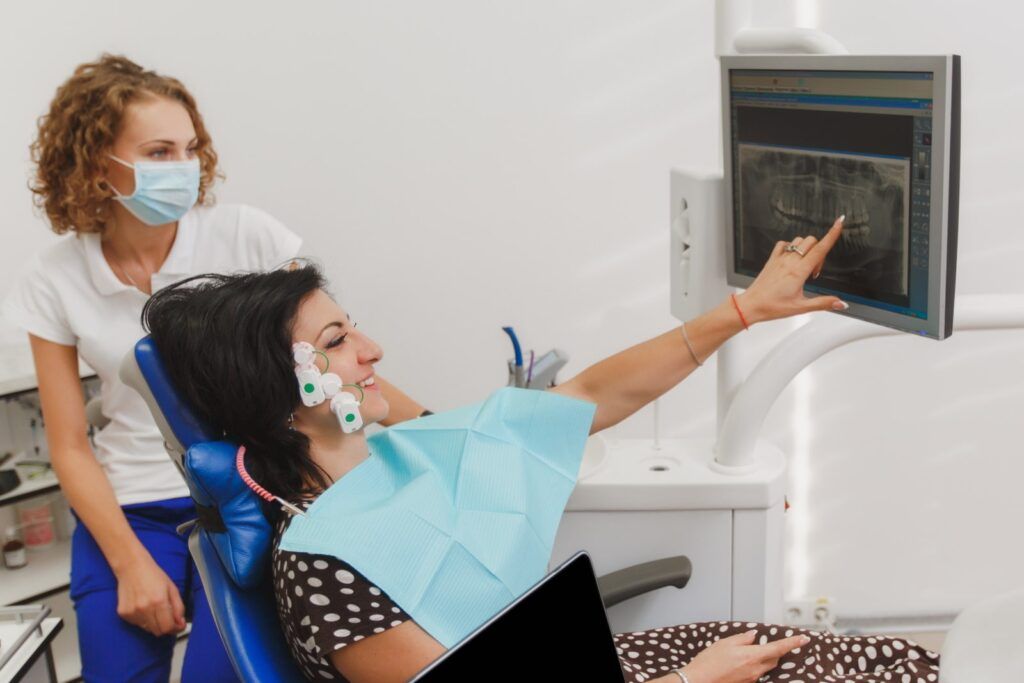The term dentofacial deformity is an obscure one, and not many dentists often talk about this condition with their patients unless their oral health presents complications. In short, dentofacial deformities refer to alterations in the face from the normal tooth, jawline, and facial structure. These deformities tend to affect the person negatively, often contributing to difficulties swallowing, speech problems, lip posture, breathing problems, and chewing issues. In some cases, these deformities can contribute to other conditions such as temporomandibular joint disorder and sleep apnea and can also affect our oral health, causing issues such as periodontal disease and tooth loss.
Dentofacial deformities are often mild but, depending on the patient, can present some significant struggles to their oral health. In today’s article, we’ll explore the type of dentofacial deformities most commonly found in patients, what causes dentofacial deformities, and how dentists can treat them.
Exploring the Various Types of Dentofacial Deformities
Dentofacial deformities affect the relationship between our face and our mouths and, depending on the type of deformity, can present some unintended consequences. However, most dentofacial deformities are mainly cosmetic concerns, typically affecting the aesthetic value of the face and its various structures. For instance, a person with an overbite will tend to have difficulties with speech, tongue thrust, and difficulties closing their mouths. This may also show up visually as a smaller, more receded jawline, which can affect the aesthetic appeal of a person’s face.
These deformities typically can result from congenial conditions, conditions present at birth, or conditions that cause after birth. In other cases, traumatic accidents can contribute to dentofacial deformities, and some patients may experience dentofacial deformities through the onset of chronic diseases, such as osteoporosis. Despite these causes, dentofacial deformities typically affect the person’s health and appearance, and many types of dentofacial deformities can occur. These include:
- Open Bites: As one of the most common conditions, open bites are skeletal deformities that can cause issues with speech patterns, tongue thrusts, and closed lips. This condition occurs when the upper and lower teeth do not come into contact when the mouth is closed and can contribute to other oral health problems such as dry mouth and gum disease.
- Excessive Overjet: Excessive overjet happens when the upper front teeth are extended beyond the normal bite range. This results from the lower jaw being removed from the normal position, but it is also possible for the upper jaw to extend beyond those limits.
- Underbite: Also called a negative underjet, underbites occur when the lower teeth are set forward of a significant position and can occur from insufficient upper jaw growth or excessive lower jaw growth.
- Gummy Smiles: Gummy smiles are caused by the overgrowth of the maxillary alveolus or the skeletal ridge along the interior of the face. Because of this, overgrowth, malocclusion, or misaligned teeth often occur alongside, creating deviations in the face that can lead to gummy smiles.
- Occlusal Cants or Facial Asymmetry: Occlusal cants cause either one side or the other to develop unevenly and are considered a rare dentofacial deformity.
- Alveolar Clefts: Commonly referred to as cleft palates or cleft lips, this condition occurs in those who have not had lip or palate surgery. While surgery is recommended at ages 8 through 10, it can be surgically repaired at any age.
- Macrogenia: Less commonly known, macrogenia is the overgrowth of the chin in a vertical direction. The overextension of the chin can easily lead to other jaw deformities such as TMJ disorder.
- Microgenia: Like macrogenia, microgenia refers to the undergrowth of the chin in a vertical direction and is typically caused by jaw deformities.
- Mandibular Asymmetry: Mandibular asymmetry is commonly caused by misaligned teeth and typically affects the chin and mandibular areas of the face.
- Long Face Syndrome: Long face syndrome is a rare condition and is a combination of oral and facial deformities causing elongated features in the face. Despite this condition’s feature, treatment can be used to correct these facial deformities.
Preparing For Dentofacial Deformity Treatment
Among the various list of conditions faced, many patients often face more common dentofacial deformities, such as open bites, underbites, and excessive overjets. These conditions are typically addressed by orthodontists, cosmetic dentists, and other specialty dentists that work to treat deformities that affect the patient’s oral health and facial symmetry. Some treatment options typically provided by these dentists include Invisalign, gum contouring, orthodontic therapy, and veneers to help correct the smile and jawlines for better symmetry. In more severe cases, orthognathic surgery can be provided, as well as orthodontic appliances, to reshape the face to an aesthetically appealing face gradually.
For patients curious about treating these conditions, diagnosing dentofacial deformities are often a complex affair, performed by multiple specialists to evaluate the dental tissues, occlusions, and facial muscles to analyze aspects of symmetry and structure. The best way to begin this treatment plan is to speak with your primary dentist about a referral to a specialist with a background in orofacial symmetry for more information.




